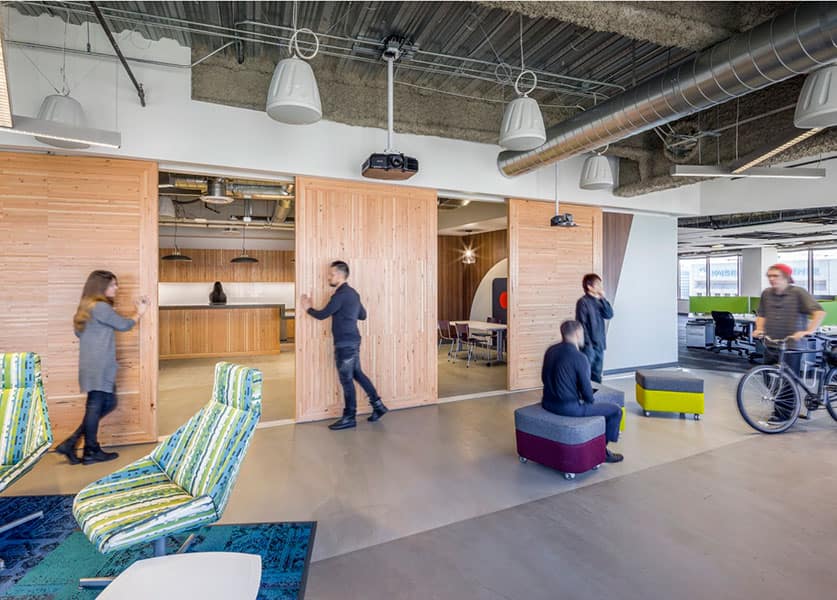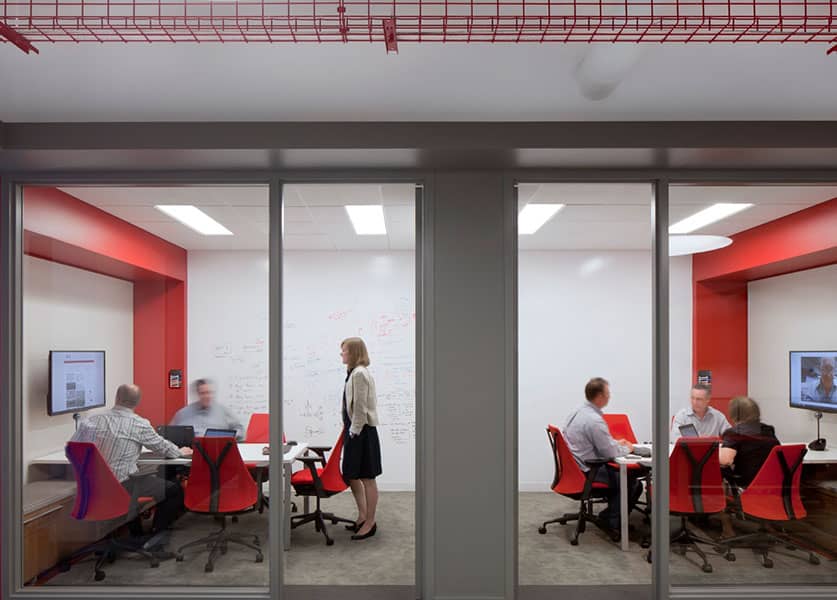
Contributing to the problem of the productivity discourse has been the design and facilities management profession’s inability to articulate just what the real value of good workplace design can mean to an organization. The root of this problem lies in the default perception of what designers do and how that translates into the value of workplace design. I would propose that what we do as designers, and what a successful workplace design strategy does, is make our client’s business successful, whether that be in health care, finance, media, technology, science, or hospitality and retail. At the end of the day, the greatest contribution we as designers can make for our clients is to contribute to their success, both financially and organizationally, and we do this through the design of the workplace.
Accomplishing this requires two factors: Framing workplace design strategies as a business case, which is important to both the analysis process as well as the deliverables that the C-suite will view as a measurable business initiative; and viewing our responsibilities as designers in a broader context and integrating organizational management tools as components of the workplace design process.
This is not an easy task. It suggests that the education of the design professional may be outdated in terms of providing the necessary training that a 21st century design professional needs. It also challenges the mindset of the design professional who has been myopically caught up in the self-image of the designer as a form-giver. A number of years ago, I gave a talk at a design firm outlining what I considered to be the greatest value that successful design strategies provides to clients. I suggested that through our process of “design thinking” and positioning design solutions as a business case, what we do is make our clients successful. A designer attending the talk offered his view that he “Didn’t go to architectural school to make his clients successful.” I fear this sentiment is not his alone. Changing the mindset of the workplace designer is a critical part of the solution.

Adopting organizational design methodologies as a design strategy framework did not provide just the substance and basis for developing design strategies that aligned with a client’s organizational design. The approach also produces the ability to consult with these same clients on their organizational design, as well as develop change management programs that go beyond the change communications programs which are often confused with change management programs.
It would seem impossible to design workspaces for organizations without being able to grasp and understand the design of that organization and what organizational design is. By doing so we are able to analyze our client’s business at a more meaningful level and will also be able to understand what is needed to enable organizational performance and how workplace design can contribute to enabling it. Developing workplace design strategies and solutions based on organizational design will provide the substance to demonstrate its contribution to organizational performance. The business of organizational design is to create alignment in every resource of the organization, thereby supporting business success. Organizational performance has the potential to contribute greater financial gain than the cost savings realized from reducing real estate. Linking the design of the workplace begins to change the discourse about value and what to measure. This also changes the perception of responsibility for successful outcomes. For instance, a client who desires greater collaboration and wants the workplace to facilitate that needs to understand that all of the collaborative work spaces in the world will not make an organization collaborative by itself. An organizational design framework will allow the design professional to identify the client’s organizational needs and can then help facilitate collaboration.
